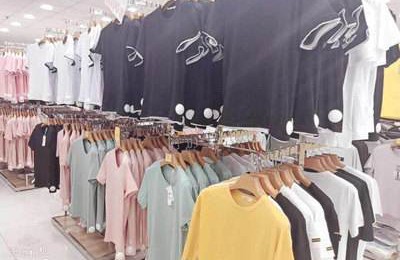The cotton textile market fell into a short-term “chaotic situation”! Textile companies are celebrating the New Year ahead of schedule!

There is only one week left in 2016. Although this year’s New Year is a bit early, there are still more than a month left. Only then can we reach the new year! For the cotton textile industry, this period of time is really a bit painful! Some cotton textile and weaving enterprises have expressed a feeling of helplessness and heavy pressure. Especially near the end of the year, the year-end effect has appeared, and the enterprises are even more confused and do not know where to go. Do we really need to take an early vacation and go home to celebrate the New Year? Let’s take a look at the specifics!
Raw material prices are unstable and cotton prices are volatile
Recently, Zheng Mian has obviously become a little less “harmonious”. The market has fluctuated significantly, which has subsequently caused a series of fluctuations in the spot market.
Seed cotton purchases are deserted, with a strong wait-and-see mood. On December 22, according to Manager Zhao, the person in charge of a 400-type ginning factory in Cangzhou, Hebei Province, from the 20th to the 22nd, the factory lowered the price of seed cotton by 0.05-0.1 yuan/jin, to 3.65-3.85 yuan/jin (clothing cent 38- 39%, moisture regain rate 10%). After the reduction, the enthusiasm of cotton farmers to sell has been significantly weakened, and the daily purchase volume is 300-400 kilograms. Recently, the haze has been heavy, and the situation of “not harvesting a grain of rice” has frequently occurred. Not only in Hebei, but also in Dezhou, Binzhou and other places in Shandong, the purchase of seed cotton is also lackluster. According to the person in charge of a cotton ginning factory in Shandong, “Actually, everyone is waiting and watching, fearing that cotton prices will fall sharply and the enterprises will lose more than they gain.”
The spot price fell slightly, and the price of small bales of cotton fell significantly. As of the 22nd, the price center of real estate cotton prices in Cangzhou, Hengshui, Hebei, Dezhou, Binzhou and other places in Shandong fell by 100-200 yuan/ton compared with the previous week. The price of small bales of cotton fell sharply. On December 22, according to the person in charge of a 200-type small factory in Hebei, “No one is paying attention to small bales of cotton recently. Currently, the company still has nearly 170 tons of small bales of cotton in stock, and the price has dropped significantly.”
According to analysis, the price of small bales of cotton has fallen. First, the closure of downstream manufacturers has increased, and downstream demand has weakened. Second, machine-picked cotton from Xinjiang has poured into the mainland, occupying part of the market share. Third, Zheng cotton has fluctuated significantly recently. , small ginning mills could not withstand the pressure and lowered their prices one after another.
It is difficult to boost cotton yarn prices, and there is little hope of recovery before the year
Since late November, due to the impact of the sharp increase in cotton textile raw materials due to the integration of old cotton and new cotton, the increase in crude oil and bulk commodities has led to the follow-up increase in polyester staple fiber, and the increase in cotton yarn transportation costs, cotton has Yarn quotations have passively increased by 500-800 yuan/ton (high-count yarns of a few major brands have increased by 1,000 yuan/ton). Downstream weaving, fabrics, workwear links and foreign trade companies are “not buying” the price increase.
At present, the warehouse delivery price of “Double 28” hand-picked cotton in Xinjiang in Henan, Shandong, Hebei, Jiangsu and Zhejiang is about 16,000-16,200 yuan/ton; the quotation of “Double 29/Double 30” hand-picked cotton is about 16,000-16,200 yuan/ton; The price of 1.4D*38mm polyester staple fiber is 8450-8500 yuan/ton, which is 200-300 yuan/ton lower than that in early and mid-December. The price of 1.4D*38mm polyester staple fiber is 8450-8500 yuan/ton, which is more than 500 yuan/ton higher than that in September and October. Therefore, fabric companies have stated that in the past half month or so, there has been basically no profit or even loss in spinning cotton yarn below 40S, and the inventory of finished products in cotton textile mills has shown a moderate upward trend. So what is the reason why yarn prices cannot rise?
First, the sharp increase in dyeing fees has swallowed up the profits of weaving factories, workwear factories and trading companies. The larger the orders received in the early stage and the longer the delivery time, the greater the losses. Fabric factories can only Risks are transferred to upstream yarn mills. It is understood that due to the relevant national departments intensifying the monitoring and auditing of pollution control and discharge, printing and dyeing enterprises that do not meet the standards will be suspended and renovated, and backward production capacity will be directly eliminated. Affected by this, Zhejiang, Jiangsu, Fujian, Guangdong, Hebei, Shandong The overall dyeing and finishing fees in places such as China have increased sharply by 0.50-0.60 yuan/meter, and the ordering period of various printing and dyeing factories has generally been extended to after mid-February. Additional price increases are required to meet orders, and orders from cloth factories and workwear factories quickly turn from profits to losses. , in order to avoid losses or reduce losses, you can only “get out” by “squeezing up and pressing down”;
2. Outer yarns at the port are “ready for the day”, especially yarns from India, Pakistan, Indonesia, and Vietnam are pouring into the Chinese market at any time. According to surveys, as of late December, there were about 92,000-95,000 tons of bonded cotton yarn in major ports in China (including a small amount of goods purchased by cloth mills or middlemen but not shipped out of the warehouse), mainly yarns from India, Vietnam, and Pakistan; Moreover, the contracted shipping prices of Indian C21S and C32S yarns that have recently arrived in Hong Kong are generally 2.45-2.50 US dollars/kg and 2.58-2.62 US dollars/kg (CNF price). The equivalent cost after customs clearance is 700-1,000 yuan/ton lower than the domestic yarn quotation. ; And because India, PakistanThe domestic cotton price in Stanislas is more than 5,000 yuan/ton lower than that in my country, so the profit margins and competitiveness of cotton mills are stronger. Cotton yarn traders in Qingdao, Guangzhou, Zhangjiagang and other places reported that inquiries and shipments of imported cotton yarn have been relatively fast since November. C20S-C32S yarn and C32S/2, JC32/2 and other high-end or air-jet, rapier Used yarn is easier to sell; once the price of domestic yarn rises again and the price difference between domestic and foreign yarns reaches more than 1,000 yuan/ton, then the C32S and below spinning yarn market will cede to imported yarn;
Third, towards the end of the year, fabric and workwear companies are mainly destocking, and there is great pressure on working capital and loan repayment. As usual, more than a month before the Spring Festival, cotton, cotton textile and workwear companies enter the rhythm of loan repayment (banks generally follow the principle of “repay first, then loan”), settle material fees, workers’ wages and bonuses, and collect payment Discounts and sales are the top priority, so raising cotton yarn prices is tantamount to “seeking death.” Recently, some small and medium-sized spinning mills and weaving mills in Shandong, Hebei and other places have reduced prices and sold goods. Most domestic companies will follow suit. The continuous shortage of funds is a “common problem” for fabric factories before the holiday;
There are too many unknown factors at the end of the year, and textile companies are confused
Recently, when learning about some cotton textile and weaving enterprises in the Yellow River Basin and Yangtze River Basin, everyone expressed a feeling of helplessness and heavy pressure on their shoulders. Especially near the end of the year, the year-end effect has appeared, and the enterprises are even more at a loss. , I don’t know where to go.
, the government has taken heavy measures to control haze, which has affected the fish in the pond. On December 22, the person in charge of a textile enterprise with 100,000 spindles in Shijiazhuang, Hebei Province said that since the beginning of this month, their factory had reduced its production by 20,000 spindles. As of December 19, the government required them to reduce another 20,000 spindles, and their production capacity had dropped by 40% to cope with the current pollution. Red alert level one response. Due to the severe haze pollution that has recently occurred in most areas of Hebei, the government has taken a heavy blow. Large factories have limited production by 20-40%, and small factories have been unconditionally shut down due to fragmentation, chaos, and poor performance, which has put great pressure on corporate finances and orders. On December 22, a cotton textile factory in Baoding stated that it currently has a large order in hand, but the company has stopped production and cannot complete it on time.
Second, funding problems became apparent at the end of the year and companies were stretched thin. There are several main aspects of recent funding problems:
1. It is difficult to get the payment back. For the cotton yarn sold by the company in the early stage, the company has recently been pursuing arrears from downstream manufacturers, but most of the answers received are “wait a little longer.” Some manufacturers of natural cotton fabrics even directly stated that they had “no money.” If they wanted to get their money back, they could only use natural cotton fabrics, towels, and fabrics to offset their accounts. Some manufacturers were forced to agree to take back some of the items to offset their accounts, but they suffered huge losses.
2. Workers demand payment of wages. It is understood that in the second half of this year, many fabric factories owe workers wages on credit, and some companies cannot settle the wage arrears for 2-3 months. A factory in Binzhou, Shandong Province said that it currently owes workers one and a half months’ wages. They borrowed money from everywhere and it took them two days to get it together, but they don’t know where to borrow money next month.
3. Raw materials cannot be purchased. This year, upstream manufacturers and cotton merchants require textile companies to settle in cash before agreeing to take delivery, which is difficult for many textile companies. Due to a shortage of funds and raw materials, the company had no choice but to temporarily suspend some production lines to maintain operations.
Postscript
Generally speaking, the cotton textile market years ago was really a bit “chaotic”. The upstream cotton market is turbulent, the downstream cotton yarn market has sluggish orders and inverted costs, and as the end of the year approaches, funding problems will also be a big problem for enterprises, which is really difficult to deal with. Under this market situation, many small textile companies have begun to suspend production, and larger textile companies have also selectively shut down some production lines. After all, the Chinese New Year is coming soon, and everyone wants to go home safely and live a good life. Year.
We believe that this wave of market conditions is due to the increased pressure on environmental protection on the one hand, and on the other hand, in the futures market, capital flows will be more frequent before the year ends, which will easily cause temporary chaos in the spot raw material market. All fabric colleagues should also be prudent and prudent.
AAAJH. LK‘PO[IUYUKT
Disclaimer:
Disclaimer: Some of the texts, pictures, audios, and videos of some articles published on this site are from the Internet and do not represent the views of this site. The copyrights belong to the original authors. If you find that the information reproduced on this website infringes upon your rights, please contact us and we will change or delete it as soon as possible.
AA







